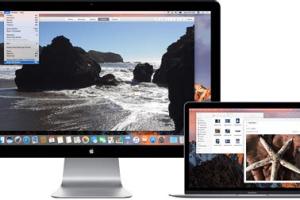Seamlessly Extend Your PC's Display to a MacBook: A Comprehensive Guide

-
Quick Links:
- Introduction
- Why Extend Your Displays?
- Requirements for Display Extension
- Step-by-Step Guide to Extend Your Display
- Troubleshooting Common Issues
- Case Studies: Successful Dual Display Setups
- Expert Insights on Display Configurations
- FAQs
Introduction
In today’s digital age, maximizing productivity often means utilizing multiple screens. If you're a PC user and own a MacBook, you might be wondering if you can extend your PC's display to your MacBook. This guide will walk you through the entire process, offering insights, tips, and troubleshooting solutions to ensure a smooth experience.
Why Extend Your Displays?
Extending your display can offer numerous benefits, including:
- Increased Productivity: Use multiple applications simultaneously across screens.
- Enhanced Multitasking: Easily switch between tasks, improving workflow efficiency.
- Improved Collaboration: Share your screen during meetings or collaborative projects effortlessly.
Requirements for Display Extension
Before diving into the steps, ensure you have the following:
- A Windows PC with display output options (HDMI, DisplayPort, etc.)
- A MacBook (preferably with macOS 10.14 or later)
- Compatible software for remote access (e.g., TeamViewer, AirServer, or similar)
- Stable internet connection if using remote access software
Step-by-Step Guide to Extend Your Display
Step 1: Choose Your Connection Method
There are two main methods to extend your PC's display to your MacBook:
- Remote Desktop Software: Ideal for wireless connections, using software like TeamViewer.
- Cable Connection: Using an HDMI cable with an adapter, if your MacBook supports it.
Step 2: Using Remote Desktop Software
To set up your display using remote desktop software, follow these steps:
- Download and install TeamViewer on both your PC and MacBook.
- Open TeamViewer on your PC and note the ID and password.
- On your MacBook, open TeamViewer and enter the ID from your PC.
- Click 'Connect' and enter the password when prompted.
- Your PC’s display should now be extended to your MacBook.
Step 3: Using a Cable Connection
If you prefer a wired connection, follow these steps:
- Connect your PC to the MacBook using a compatible HDMI cable.
- On your MacBook, go to System Preferences > Displays.
- Select 'Detect Displays' to identify your PC.
- Adjust the display settings according to your preferences.
Troubleshooting Common Issues
While the setup process is straightforward, you may encounter some issues. Here are common problems and their solutions:
- Black Screen: Check your cable connections or restart the remote desktop application.
- Lagging Display: Ensure a stable internet connection and close unnecessary applications.
- Display Not Detected: Recheck the display settings on both devices and ensure drivers are updated.
Case Studies: Successful Dual Display Setups
Case Study 1: Graphic Designer's Setup
A freelance graphic designer successfully extended her PC display to her MacBook using a cable connection, allowing her to work on large design files across both screens, increasing her productivity significantly.
Case Study 2: Remote Worker
A remote worker utilized TeamViewer to connect his PC to his MacBook. This setup allowed him to access work files from his PC while enjoying the portability of his MacBook.
Expert Insights on Display Configurations
We consulted with IT professionals who emphasized the importance of choosing the right connection method based on your needs. For example, graphic designers often benefit more from wired connections due to stability, while casual users may prefer the flexibility of remote desktop solutions.
FAQs
1. Can I use my MacBook as an external monitor for my PC?
Yes, using software like AirServer or TeamViewer allows your MacBook to act as a monitor for your PC.
2. What software is best for extending my display?
Popular choices include TeamViewer, AirServer, and Splashtop, each catering to different needs.
3. Do I need special cables to connect my PC to my MacBook?
It depends on the ports available on both devices. An HDMI or DisplayPort cable is commonly used.
4. Will extending my display affect performance?
It can, especially if using remote software over a slow connection. Wired connections typically provide better performance.
5. Can I extend my display wirelessly?
Yes, using remote desktop applications allows for wireless display extension.
6. How do I adjust my display settings on Mac?
Go to System Preferences > Displays to manage your display settings.
7. Is there a limit to how far I can extend my display?
For wired connections, cable length can limit you. Wireless connections depend on your internet range.
8. Can I use multiple MacBooks with my PC?
Yes, but you may need to switch between devices in the remote desktop software.
9. What is the best resolution for extended displays?
Choose a resolution that matches your primary display for the best visual consistency.
10. Is it safe to use remote desktop software?
Yes, as long as you use reputable software and secure your connection with strong passwords.
Random Reads
- How to recover deleted history from your browser
- How to get bad smells out of carpet
- How to get badges on imvu
- Disable google safe search
- How to change gu10 halogen bulb
- How to paint concrete statues
- How to paint concrete
- How to collapse columns in excel
- Remove contacts gmail
- Remove dent stainless steel refrigerator